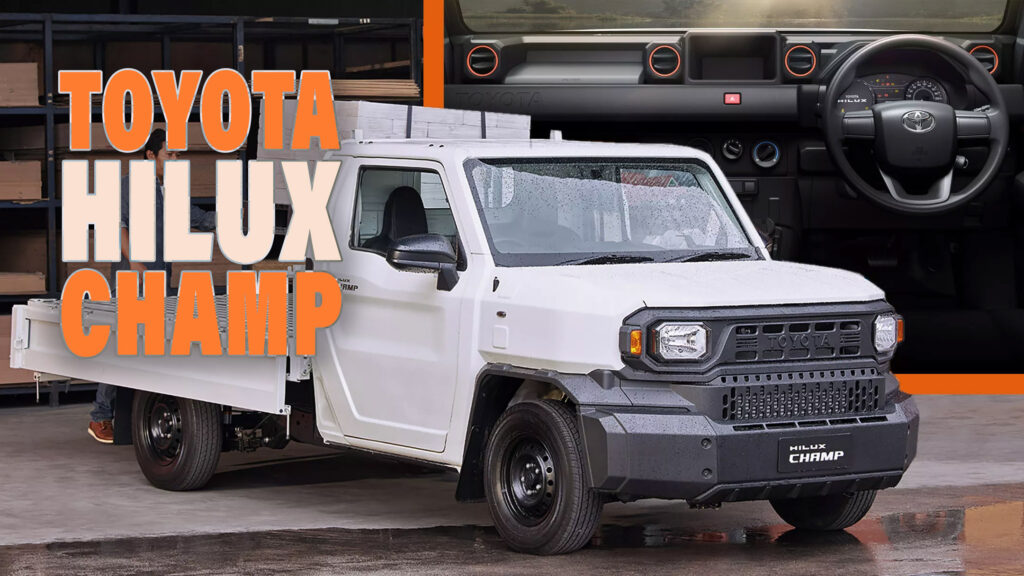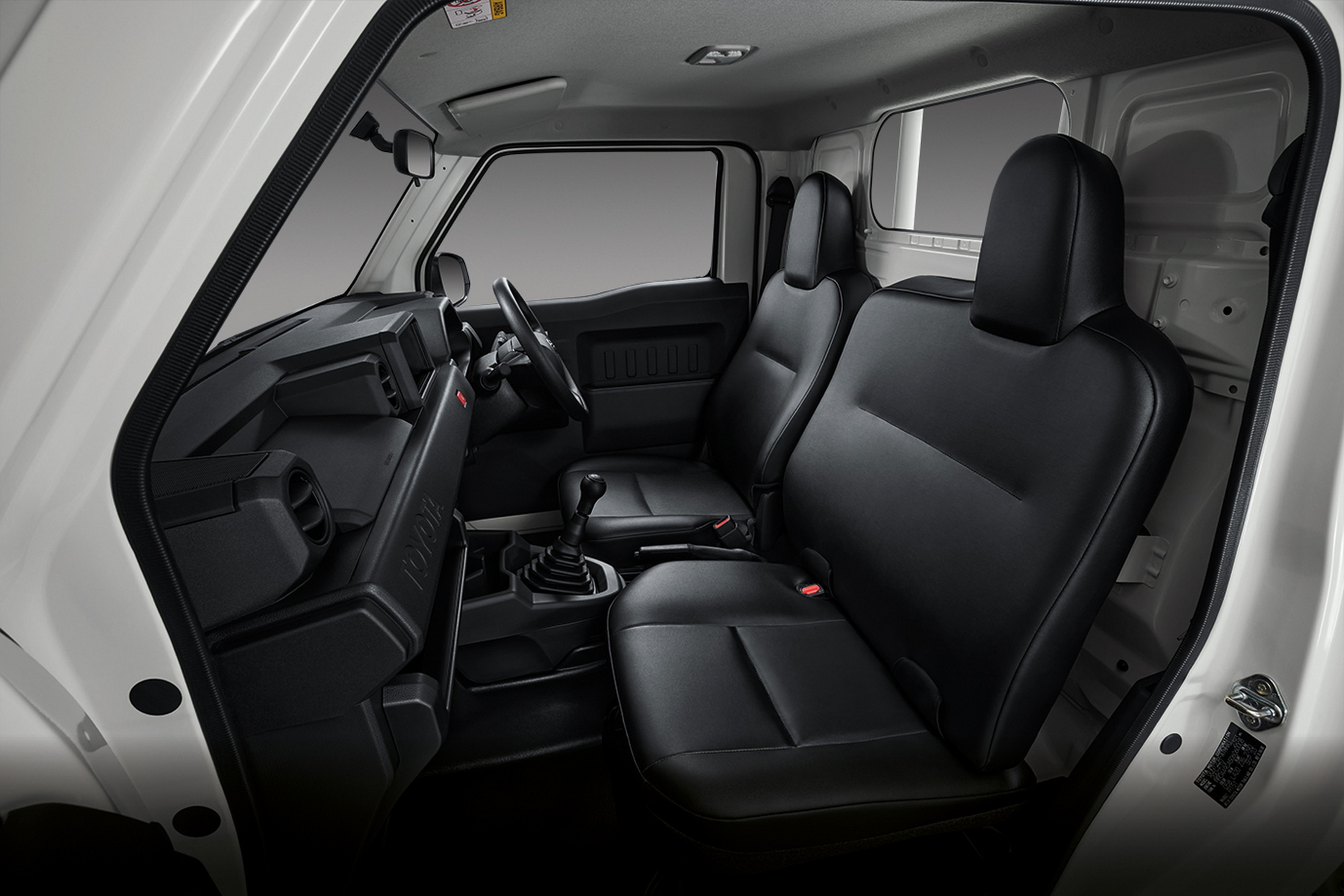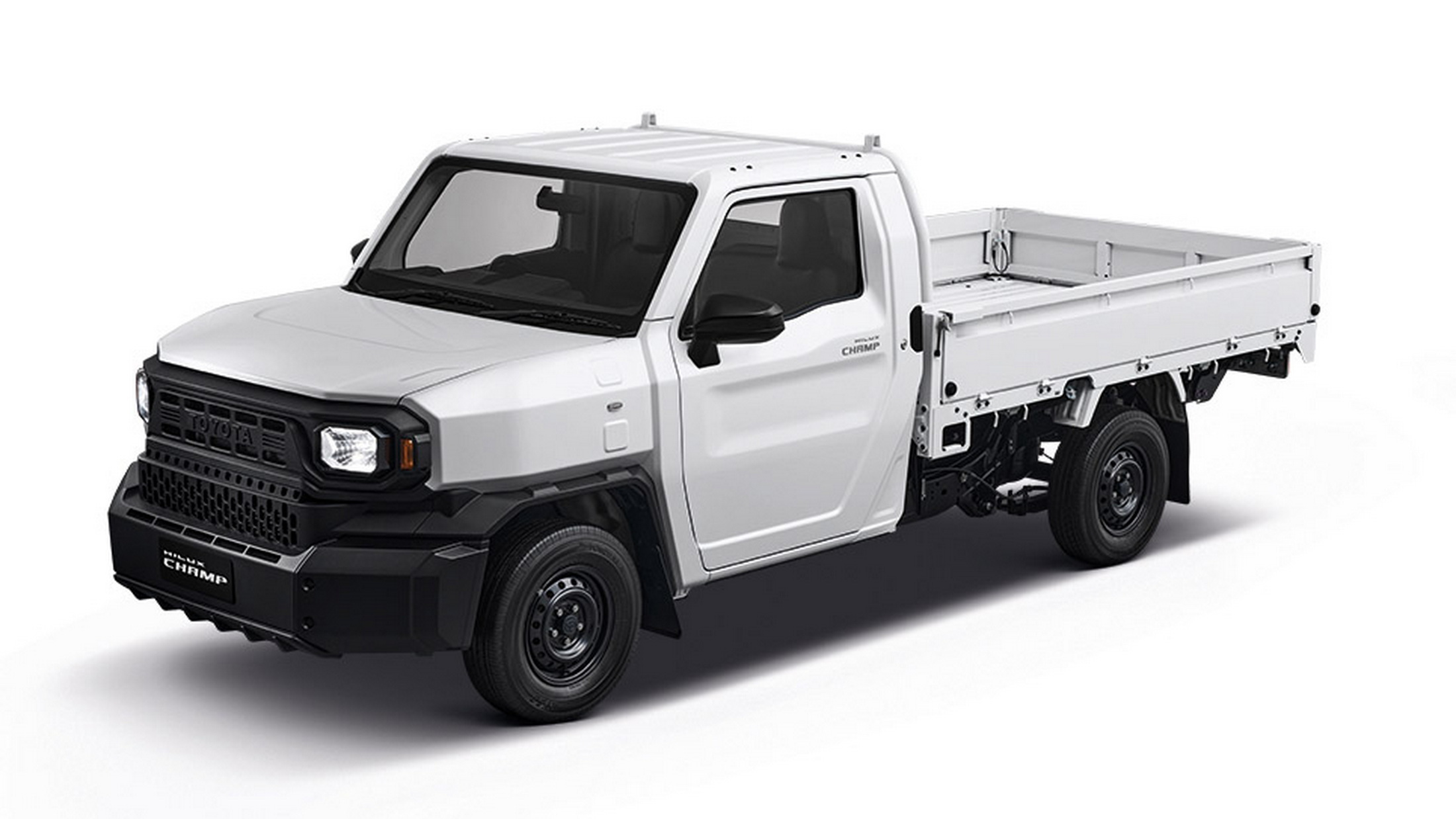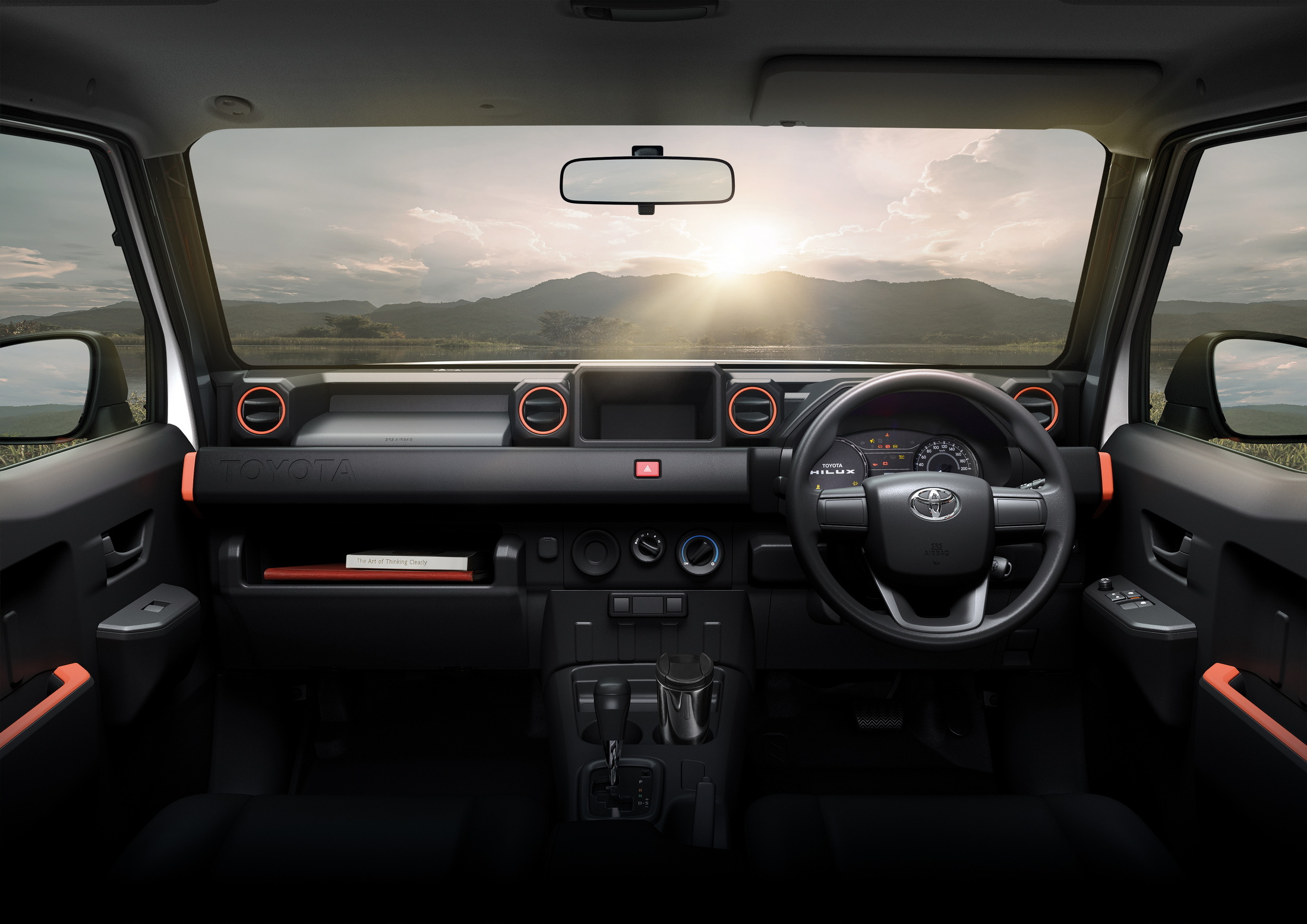The much-anticipated production version of the Toyota IMV 0 concept was introduced in Thailand, adopting the Hilux Champ nameplate. The bare-bones pickup retains the concept’s styling and character, boasting a low entry price, three powertrain options, and endless aftermarket customization possibilities.
From the outside, the Hilux Champ looks identical to the IMV 0 concept. The heavy dose of plastic cladding on the Land Cruiser-inspired face, the flat windshield, the black steelies, and the halogen headlights (LEDs are optional), communicate the budget-focused orientation of the model.
The Thai-spec Hilux Champ is available in short- and long-wheelbase forms, either with a drop-side bed or a flat deck. The shortest model measures 4,970 mm (195.7 inches) long, while the longer version stretches to 5,300 mm (208.7 inches).
More: New Toyota Hilux Mild Hybrid Debuts Alongside Extended Family Of ProAce Vans
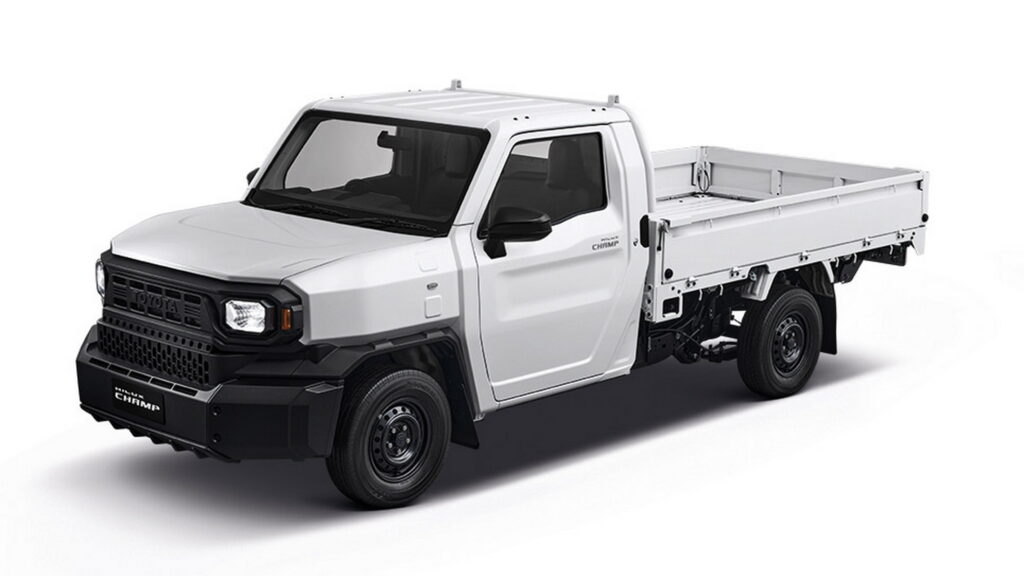
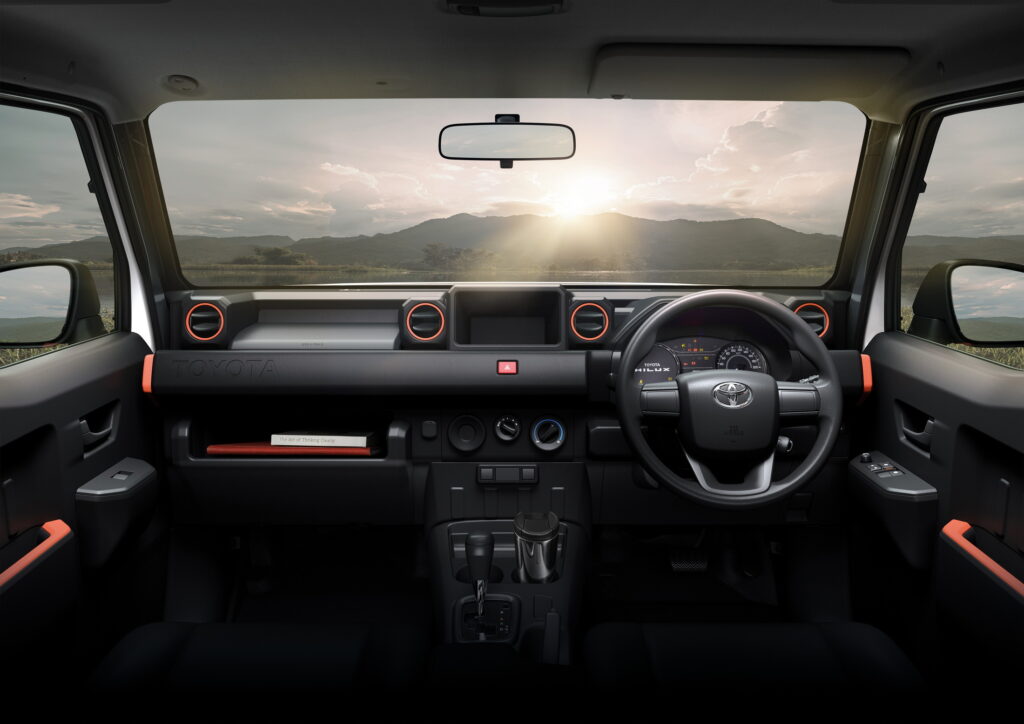
Toyota engineers added bolt holes at various locations of the deck, allowing owners to customize the vehicle by attaching different kinds of aftermarket parts. Toyota Motor Thailand mentioned more than 100 accessory manufacturers that can transform the Hilux Champ to the LCV of your dreams.
All of the Toyota Hilux Champ versions in Thailand come with a single-cab design, two doors, and a two-seater cabin. The interior is as basic as the exterior, with orange accents making the black plastic more bearable to look at. The lack of an infotainment display or any sort of multimedia system makes the instrument cluster the only source of information for the driver. The only visible features in the pictured example are a fan (no fancy A/C or climate control), two cupholders, a power outlet, electric windows, and a few storage compartments.
Three Powertrain Options, RWD-Only
The Toyota Hilux Champ is based on a simplified version of the IMV ladder-frame architecture which was developed in Thailand and also underpins the regular Hilux. The Thai-spec pickup will be offered with three powertrain options – a 2.0-liter petrol (1TR-FE), a 2.7-liter petrol (2TR-FE), and a 2.4-liter turbodiesel (2GD-FTV).
The entry-level 2.0-liter petrol engine makes 137 hp (102 kW / 139 PS) and 183 Nm (135 lb-ft) of torque. The more potent 2.7-liter petrol produces 164 hp (122 kW / 166 PS) and 245 Nm (181 lb-ft) of torque. Finally, the torquier 2.4-liter turbodiesel is good for 148 hp (110 kW / 150 PS) and 343 Nm (253 lb-ft) allowing a Hilux-matching payload capacity of 1 tonne (2,205 lbs).
The base engine is exclusively mated to a 5-speed manual gearbox while the other two options are available with a 6-speed torque converter automatic. In all cases power is transmitted to the rear axle, meaning there is no 4WD option for the Hilux Champ – at least for Thai buyers.
Pricing
The Toyota Hilux Champ is priced between ฿459,000-577,000 ($13,065-16,425) in Thailand, making it more affordable than the regular Hilux which starts at ฿544,000 ($16,120) in its most basic form and can reach over ฿1,256,000 ($35,788) for a full-spec dual-cab 4×4 model.
The automaker is already accepting orders for the new pickup, although there is no specific timeline for deliveries. The Hilux Champ will be manufactured at Toyota’s Samrong Plant in Thailand which is focused on the production of commercial vehicles.




